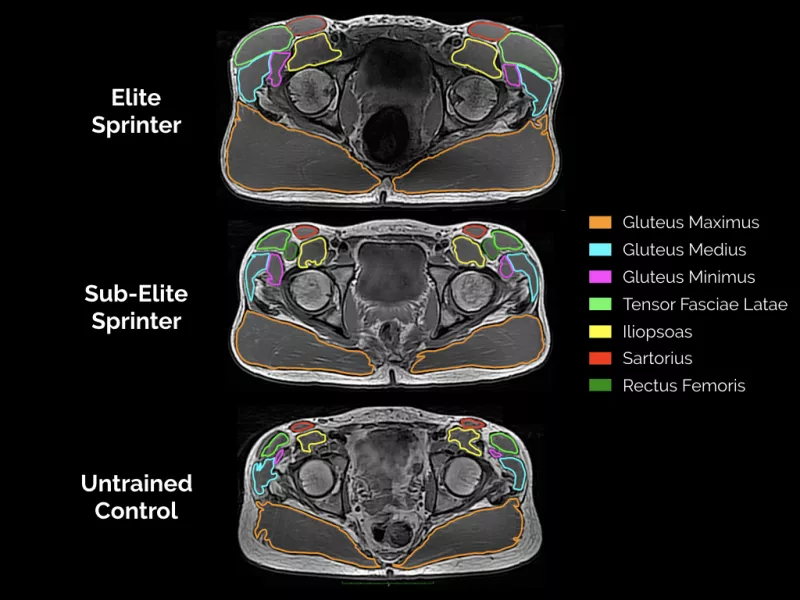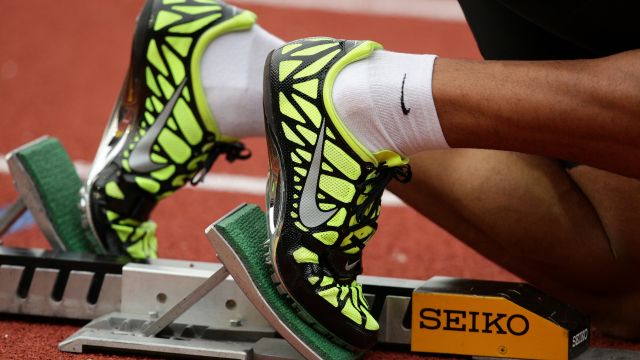After examining the anatomy of elite athletes, researchers discovered that a large bottom is key for sprint speed and performance.
The new study reveals how specific leg muscles differ between groups of elite sprinters – with an average 100m personal best of 9.99s – sub-elite sprinters, and untrained men.
Experts found that top sprinters, while being generally more muscular, had a very specific pattern to their muscularity.
Some muscles, such as hip extensor muscles, were far bigger compared to sub-elite sprinters, but others rather similar, such as calf muscles.
The researchers also found the size of a number of muscles relate to the 100m time, with the gluteus maximus explaining 44% of the variability in sprint time among sprinters.

Rob Miller, a PhD student at Loughborough University and a strength and conditioning coach with British Athletics, and Professor Jonathan Folland, an expert in neuromuscular performance, used a magnetic resonance imaging (MRI) to measure the size of 23 lower body muscles in 42 men – five elite sprinters, 26 sub-elite and 11 untrained men.
Among the elite and sub-elite sprinters there was variability in performance with 100m personal bests that ranged from 9.91 to 11.25 seconds.
The researchers found 44% of this variability in performance was explained by the size of the gluteus maximus and that this muscle was 45% bigger in elite sprinters than sub-elite sprinters.
Prof Folland said: “This is surprising because sprinting is thought to be influenced by many factors – technique, psychology, nutrition, anatomy of other structures – so to find a single muscle that alone seems so important, explaining nearly half the variability, is remarkable.
“It appears that muscle size is more important for fast running than we thought and especially the size of the hip extensors and gluteus maximus.”
He added: “The logical implication is that with a larger gluteus maximus the runner will be able to generate more power and therefore greater sprint speed.
“Thus, increasing the size of the gluteus maximus in particular, as well as the other hip extensor muscles, would be expected to improve sprint performance.”
I believe this line of research has the potential to have a significant impact on coaches and practitioners working with elite level sprinters
Researchers say the study, published in the journal Medicine and Science in Sports and Exercise, has the potential to revolutionise the physical training and performance of athletes.
Mr Miller, the first author of the paper, said: “I believe this line of research has the potential to have a significant impact on coaches and practitioners working with elite level sprinters – it is unusual to find research on truly elite athletes and it’s exciting to have found specific characteristics that seem to differentiate between the good and very-good.”
The team is now building on the research with a study focused on female sprinters.
It is also collecting data for a comparison of muscle anatomy of runners competing over different distances.







